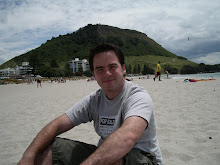After the past few lectures, which have focused on the Arduino boards, and new ways of looking at currently existing products and what you can do with them by breaking them down to their base components and uses, we have decided to change our direction of our group project.
The past few lectures have completely changed my thought processes, the simplest idea of just reusing existing products and technologies, and taking their uses for different purposes, frankly, had just eluded me. The example of a cheap key ring which flashes and makes a sound when you whistle, being broken down to give you a sound sensor as an input, with a light and speaker as outputs, sounds obvious because that is precisely what the technology is, I had just never thought of it in those terms before. However by changing your thinking this way and combining that thought with the capabilities of a piece of equipment like the Arduino board, you open up a world of possibilities.
The first idea involves the old theatre in Union Street and camera trickery. We still plan to use Union Street as our location, however the rig we would have needed to achieve our previous idea was impractical in every sense, including financially, and the outcome would not have been worth the input. Another reason for changing our project was due to the time of year. Our previous idea hinged on the images fading in and out based on the inputs, which were random, so by aiming for the commuter hours of between 5pm and 6pm the image may have been completely invisible due to the combination of a low input and the daylight at that time of year. So we have decided to change to incorporate the Arduino and these simple ‘hacks’.
To start this process we have decided to come up with separate ideas first, then join together as a group to use either one or parts of these separate ideas. So my idea would be to use a wireless device like a computer mouse and hack it so it acts as an input on the Arduino board. This input would come from attaching a light sensor to the left mouse button, then placing it on the red traffic light signal so when the cars stop the light input clicks the mouse and tells the Arduino board to tell the computer to start the projection for our now captive audience. To link it to our original idea of bringing the history of the area back to the present, the projection will start by displaying the famous red curtains of the theatre, these will open to reveal images which represent modern world data taken from ‘worldometers’, which hopefully depending on how it is represented, people will find these images interesting, artistic, and shocking. The show will stop after a short delay when the lights turn green, with an old fashion TV shutoff style effect back to black. This on off effect will also hopefully mean people will want to stop and wait for the next show.
Also to find out more about low tech toy hacks visit ‘tinker.it’






















